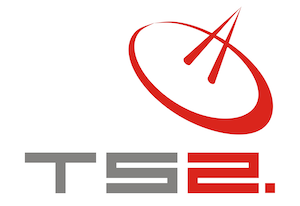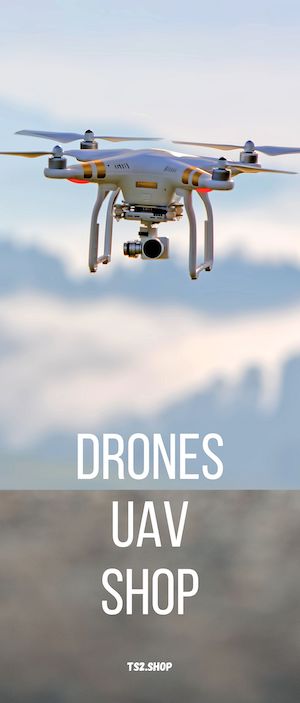Skip to content
The Role of Neuromorphic Computing in Social Robotics and Humanoid Robots
The Role of Neuromorphic Computing in Social Robotics and Humanoid Robots
Subscribe
Exploring the Possibilities of Neuromorphic Computing in Humanoid Robotics
Robotics technology has come a long way in recent years, and the possibilities of neuromorphic computing in humanoid robotics is a particularly exciting development. Neuromorphic computing is a form of artificial intelligence (AI) that is inspired by the human brain and nervous system, and it has the potential to revolutionize the way robots are designed and programmed.
Neuromorphic computing can be used to give humanoid robots more realistic behavior. This technology can enable robots to respond to their environment in a more natural way, allowing them to interact more effectively with humans. With this technology, robots can be programmed to analyze their environment and make decisions based on their observations. This could enable robots to interact more effectively with their environment, potentially making them more capable of performing complex tasks.
Neuromorphic computing could also be used to create more intelligent robots. This technology could give robots the ability to learn from their experiences and use that knowledge to make decisions. This could enable robots to become more independent and autonomous, potentially allowing them to perform tasks on their own.
The possibilities of neuromorphic computing in humanoid robotics are still largely untapped. However, researchers are beginning to explore the potential applications of this technology. For example, some researchers are looking at ways to create robots that can interact with humans in more natural ways. Other research is looking at ways to give robots the ability to learn and make decisions on their own.
The potential of neuromorphic computing in humanoid robotics is an exciting prospect. As this technology develops, it could revolutionize the way robots are designed and programmed. This could lead to more intelligent robots that can interact with humans in a more natural way, and potentially even lead to robots that are capable of performing complex tasks on their own. The possibilities of this technology are truly exciting, and further research could open up new possibilities for humanoid robots.
Utilizing Neuromorphic Computing to Enhance Social Robotics
The utilization of neuromorphic computing to enhance social robotics is an exciting new development that is revolutionizing the field of robotics. Neuromorphic computing is a type of computing that mimics the behavior of a human brain, allowing for the creation of more human-like robots.
Neuromorphic computing utilizes artificial neural networks that are composed of a number of interconnected nodes, or neurons. These neurons communicate information to one another, just as neurons in the human brain do, allowing for more complex behavior in robots. This technology allows robots to analyze input from their environment and respond accordingly.
The ability of robots to interact with their environment in a more human-like manner has a variety of applications in the field of social robotics. For example, robots can be used to provide companionship and assistance to the elderly and disabled. They can also be used to interact with children, providing educational and recreational activities. Additionally, robots can be used to improve safety in public spaces, acting as security guards or providing assistance in emergency situations.
The use of neuromorphic computing in social robotics is still in its early stages, but the potential for this technology to revolutionize the field is immense. Researchers are making rapid progress in developing robots that are able to interact with humans in increasingly complex ways. As this technology continues to advance, the possibilities for social robotics are limitless.
Assessing the Prospects of Neuromorphic Computing for Humanoid Robots
Recent advances in neuromorphic computing have presented an exciting new opportunity for humanoid robots. Neuromorphic computing is a form of computing that mimics the structure and function of the human brain, enabling robots to process and respond to data in ways that are analogous to how humans think and act.
The potential of neuromorphic computing for humanoid robots is considerable. Robots powered by neuromorphic computing systems could use their artificial intelligence to make decisions with greater agility and accuracy than ever before. This could help robots to better interact with people and their environment, allowing them to respond to situations in a more natural and intuitive manner. Neuromorphic computing could also enable robots to perform complex tasks such as navigating through unfamiliar spaces, recognizing objects, and understanding speech.
The development of neuromorphic computing systems, however, is still in its early stages, and there are several challenges to overcome before it can be fully adopted for humanoid robots. For example, the algorithms used to power neuromorphic computing systems need to be optimized for the specific tasks and environments in which robots will be used. Additionally, the computational power of neuromorphic computing systems needs to be increased in order to process data quickly and accurately.
Despite these challenges, neuromorphic computing has the potential to revolutionize the way humanoid robots are designed and used. It may take some time before these systems are fully adopted, but the possibilities for humanoid robots powered by neuromorphic computing systems are immense. As this technology continues to advance, it could pave the way for a new wave of intelligent robots that are capable of performing complex tasks with greater speed and accuracy than ever before.
The Impact of Neuromorphic Computing on Social Robotics and Humanoid Robots
The emergence of neuromorphic computing is revolutionizing the capabilities of social robotics and humanoid robots. Neuromorphic computing is a form of artificial intelligence (AI) that mimics the structure and function of the human brain. It is based on the concept of artificial neural networks, which are designed to sense, learn, and act in the same way as biological nervous systems.
Neuromorphic computing has the potential to revolutionize social robotics and humanoid robots. By using this technology, robots will be able to learn from their environment and respond to stimuli in a more natural and human-like manner. This will enable them to interact with people more effectively and intuitively. Furthermore, neuromorphic computing can be used to process large amounts of data quickly, allowing robots to make decisions faster.
Neuromorphic computing can also be used to enhance the accuracy and speed of facial recognition algorithms. This can improve the robot’s ability to recognize and respond to different people. Additionally, robots can be equipped with sensors that can detect and respond to emotions, enabling them to better understand and interact with people.
The combination of neuromorphic computing and robotics is expected to advance the development of social robots and humanoid robots in the coming years. These robots will be able to better understand their environment, recognize people, and interact with them in a more natural way. This could lead to a wide range of applications, from healthcare to entertainment. Moreover, it could pave the way for robots to become part of our everyday lives.
Overall, the impact of neuromorphic computing on social robotics and humanoid robots is expected to be far-reaching. This technology has the potential to revolutionize the way robots interact with people, transforming them from simple machines into intelligent companions. With further advances in this technology, it is likely that robots will become an integral part of our lives in the near future.
Designing and Developing Neuromorphic Computing Systems for Humanoid Robots
Recent advancements in artificial intelligence (AI) have enabled the development of humanoid robots with incredible capabilities. These robots can perform various tasks, interact with humans, and even understand complex emotions.
To enable these robots to perform even more complex tasks, researchers are now turning to neuromorphic computing systems. Neuromorphic computing systems are based on the principles of the human brain, using networks of neurons and synapses to process information. This type of computing system is designed to mimic the activity of neurons and synapses, allowing for complex computations in a more efficient way.
Researchers at the University of California, Los Angeles (UCLA) have developed a neuromorphic computing system for humanoid robots. This system is designed to process visual and auditory data, as well as other sensory inputs. It can also interpret human speech and facial expressions.
The neuromorphic computing system is integrated into the humanoid robot’s body. This integration allows the robot to interact naturally with humans and its environment. The system is also designed to learn from its environment, enabling it to adapt to changing situations.
The UCLA researchers have already tested the neuromorphic computing system on a humanoid robot. The robot was able to recognize objects, follow spoken commands, and interact with humans in a natural way.
The development of neuromorphic computing systems for humanoid robots is an exciting new field of research. These systems have the potential to revolutionize the way robots interact with humans and their environment. As the research progresses, humanoid robots with advanced capabilities could become a reality.
Post navigation
Previousrevious post:The Advantages of Satellites for Smart Cities and Urban Planning
Next:Next post:The Importance of Satellites for Humanitarian Mapping
Leave a Reply
Your email address will not be published.Required fields are marked *
Comment *
Name
This site uses cookies to deliver services in accordance with the Privacy Policy. You can specify the conditions for storage or access to cookies in your browser.
ts2.ai
TS2 SPACE
- AI and Predictive Maintenance: Using Machine Learning for Predicting and Preventing Equipment Failures
Published on 2023-03-27- AI and Predictive Maintenance: Using Machine Learning for Predicting and Preventing Equipment Failures
Published on 2023-03-27- Ambient Experience vs. Traditional User Experience: A Comparison
Published on 2023-03-27
© 2023 TS2 Space Sp. z o.o.
Tel: +48 22 364 58 00, +48 22 630 70 70
VAT PL7010612151
KRS 0000635058
REGON 365328479
EORI PL701061215100000
RPT 11918
NCAGE 99B8H
DUNS 422248638
Address: LIM Center XVI, Aleje Jerozolimskie 65/79, 00-697 Warsaw, Poland
TS2 SPACE provides telecommunications services by using the global satellite constellations. We offer you all possibilities of using satellites to send data and voice, as well as appropriate data encryption. Solutions provided by TS2 SPACE work where traditional communication is difficult or impossible.
DJI Drones | Internet Providers
- Forums
- ASX - By Stock
- Sticks and Stones
BRN
brainchip holdings ltd
Add to My Watchlist
0.00%
 !
20.5¢
!
20.5¢
Skip to content [IMG] The Role of Neuromorphic Computing in...
Featured News
Add to My Watchlist
What is My Watchlist?
A personalised tool to help users track selected stocks. Delivering real-time notifications on price updates, announcements, and performance stats on each to help make informed investment decisions.
 (20min delay) (20min delay)
|
|||||
|
Last
20.5¢ |
Change
0.000(0.00%) |
Mkt cap ! $415.2M | |||
| Open | High | Low | Value | Volume |
| 20.5¢ | 21.0¢ | 20.0¢ | $1.208M | 5.898M |
Buyers (Bids)
| No. | Vol. | Price($) |
|---|---|---|
| 52 | 2248810 | 20.0¢ |
Sellers (Offers)
| Price($) | Vol. | No. |
|---|---|---|
| 20.5¢ | 369721 | 7 |
View Market Depth
| No. | Vol. | Price($) |
|---|---|---|
| 43 | 1850019 | 0.200 |
| 26 | 1277507 | 0.195 |
| 56 | 1841112 | 0.190 |
| 40 | 1366842 | 0.185 |
| 65 | 1233007 | 0.180 |
| Price($) | Vol. | No. |
|---|---|---|
| 0.205 | 257259 | 3 |
| 0.210 | 978887 | 19 |
| 0.215 | 1370152 | 18 |
| 0.220 | 2146303 | 50 |
| 0.225 | 741889 | 12 |
| Last trade - 16.13pm 04/07/2025 (20 minute delay) ? |
Featured News
| BRN (ASX) Chart |
The Watchlist
NUZ
NEURIZON THERAPEUTICS LIMITED
Dr Michael Thurn, CEO & MD
Dr Michael Thurn
CEO & MD
SPONSORED BY The Market Online













